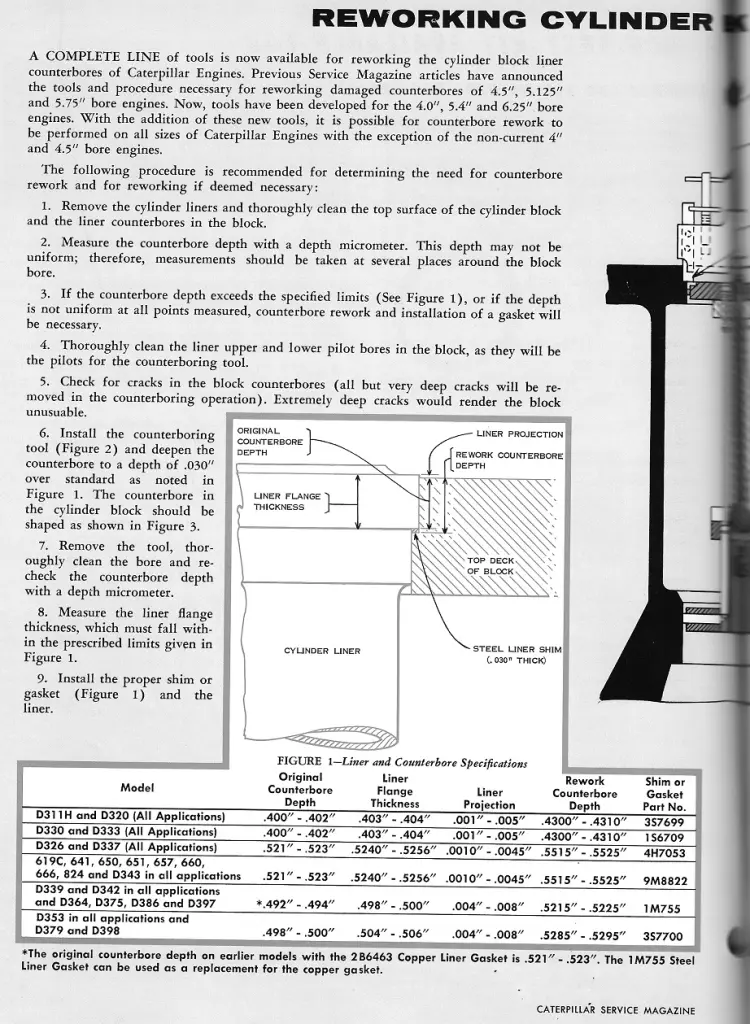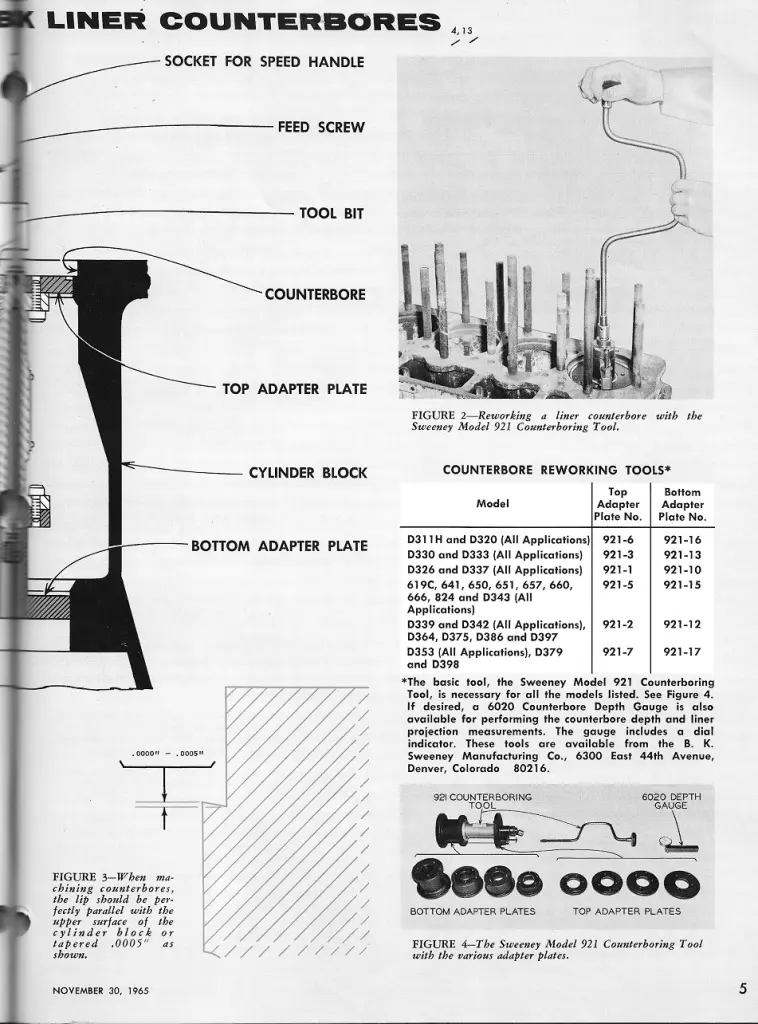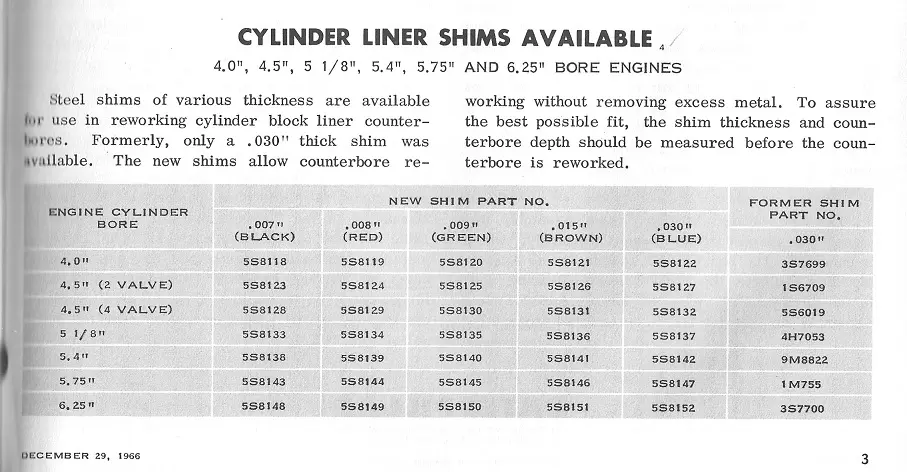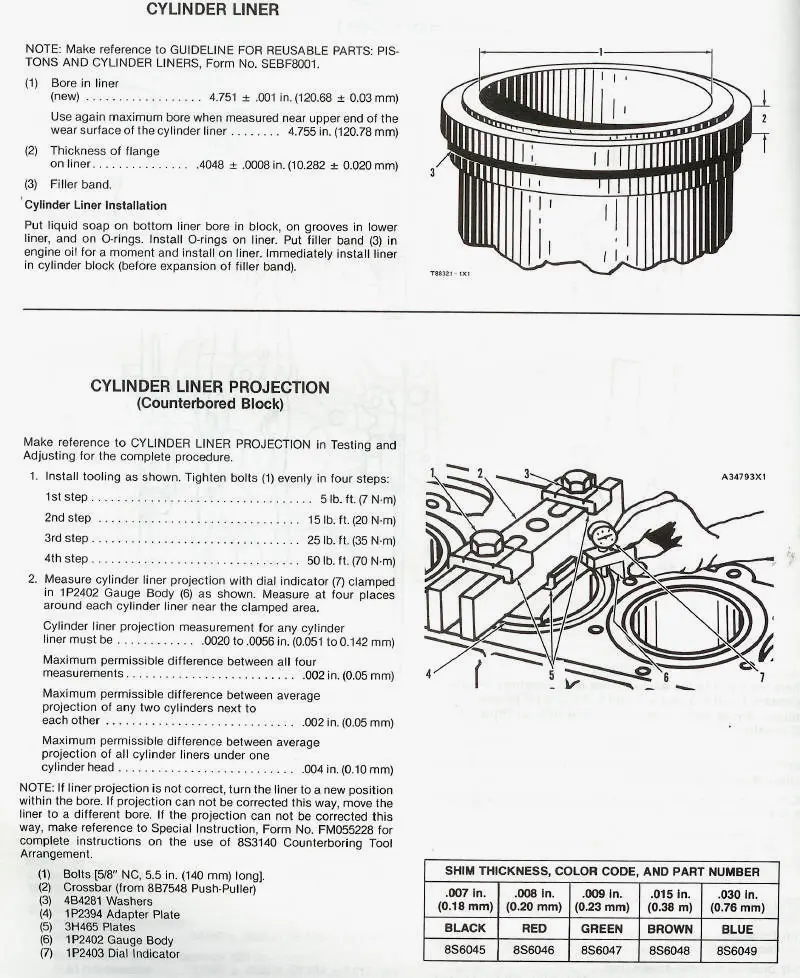0.002" projection is within spec although it is on the low end. If you must having consistent counter bore depth would be the way to go/start. I wouldn't get to excited about a difference of 0.001" between some bores. You are clamping down the liners to do your projection check, right?
On cylinder 1, I have .0025-.003" difference on protrusion at the 2 o'clock and 8' o'clock positions, and I've rotated the sleeve and have tried a different sleeve. Just for fun, I miked the top lip on on all the sleeves and they are .375", very consistent.
I'm clamping down the liners with 35 foot pounds on each stud.
Hi Team,
have found some after market liners did not have equal thickness flanges--suggest measure around your liner flanges and see what you have--seem to recall a few that the flange was not square to the liner centre line--these broke the flange off when the head was tensioned.
Also check the lower liner bore is clean of rust scale etc. as the bottom of the liner is free swinging and only held from vibrating by the liner's lower seal rings--the liner should not touch the lower bore when fitted and clamped down--check with feeler gauges from below to be sure.
Cheers,
Eddie B.
Try upping the torque to 50 ft. lbs
A change in protrusion from 2 o'clock to 8 o'clock when rotating in the same bore is not a good sign. Need to check run out consistency of the liner flange.
OM, when you say consistency of liner flange, do you mean the lip on top of the new liner, or do you mean the ledge cut approximately .4" below the block deck where the sleeve rests on the copper gasket? If you mean the top of the new liner, it measures consistently on all 6 liners, and my new (Cat) copper gaskets measure consistently, too.
Using a depth micrometer, the ledges (or counterbore) in the block are consistently off by as much as .003" in some places. I don't have the right stand to use a dial indicator. So, regardless of whether I rotate a sleeve in the bore 90 or 180 degrees, I get the same measurements.
I'll try torquing at 50.
I was wondering about the liner flanges and if they might be warped. I envisioned having the liners chucked up in a lathe with a dial indicator up against the bottom of the flange and checking what the run out would be. Now you indicate the counterbore depths are inconsistent so it appears the problem is with the block and its counterbores. Could be there is a combination problem so both warrant checking. Are you sure the liners aren't touching anything at the bottom when you make your liner rotation location check?
OM, I'm able to rotate the liner, but in a few cases, they are a tight fit when I try to rotate them. The new sleeves and the lower bore are very clean. These are aftermarket sleeves.
This block has been rebuilt at least twice. There is a tag showing it was rebuilt in OK and the main journals and rod journals were returned to standard. When i dismantled it, both mains and rods had been ground .030" under. Other than that, I do not know the history of this engine, except it looked like it had been run hard at the end. I'm guessing the head gasket started leaking based on the condition of the valves and the rust. Evidence of stop leak in the water jackets. Surprisingly, the block deck is level and it cleaned up nicely. No pitting.
I'm starting to think this block requires attention from an engine shop.
Thanks for your input.




Hi,
if some of the liners are hard to rotate in their bores it would be an indication of them contacting either the upper and/or lower liner bores in the cyl. block.
OM's suggestion of chucking the liners and running a dial indicator is a good way of checking the truth of the liner's critical surfaces.
Suggest to run said indicator over the OD of the liner flange and both its upper and lower surfaces to check the truth of these surfaces to the liner centre line.
Also agree that your counter bores need truing up and are most likely the real problem.
The counter bore steps need machining to square them up to the top deck and crankshaft, you will then need thicker shims/gasket/washers to reset the liner protrusions to spec.
It was not unusual to have to use different thicknesses of shim washer in each liner counter bore as we only ever machined the absolute minimum to clean up in any counter bore.
Scans may help.
The Liner Projection instruction holds true for all Cat engines even though it says for 3306 engines.
A depth mic., vernier and carefully, even a short suitable straight edge and feeler gauges can be used to measure the protrusion.
Cheers,
Eddie B.